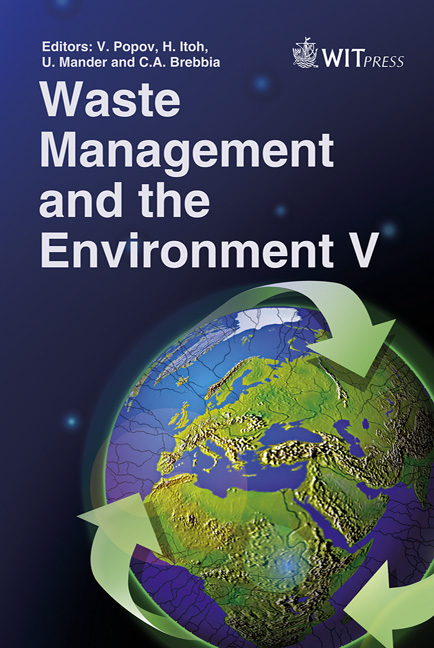Recycled Chopped Rice Straw–cement Bricks: An Analytical And Economical Study
Price
Free (open access)
Transaction
Volume
140
Pages
8
Page Range
79 - 86
Published
2010
Size
434 kb
Paper DOI
10.2495/WM100081
Copyright
WIT Press
Author(s)
M. Allam & G. Garas
Abstract
The Egyptian rice yield is one of the highest in the world (9.1 tons per hectare in 2001), a crop that leaves behind roughly 4.0 million tons of straw annually. Because of limited water resources, the government of Egypt has tried to limit rice cultivation. However, cultivation has continued to expand due to rice production’s high profits. The methods for disposing of the straw and stubble residue remaining in the fields after harvest are either burning or baling. Although some limited uses of rice straw, such as for animal feed or paper making, are maintained, burning is still the principal disposal method for most of the rice straw residue, as it is efficient, effective and cheap, even after being phased out in the Egyptian law of Environment number 4-1994. As a result most farmers tend to burn the straw in open fields, boosting air pollution and serious human health problems due to the emission of carbon monoxide. This paper addresses the recycling of chopped rice straw to produce light weight cement bricks to be used as fillers in skeleton type buildings. The production of these bricks was studied analytically to reach the best mix proportions under compression strength not less than 80 kg/cm2 according to the Egyptian codes of building. An economical market study for the mass production of the cement brick has been carried out. It was concluded that the rice straw–cement brick that would maintain a compression stress up to 115kg/cm2 costs 25% less than the similar pure cement brick available in the market. Keywords: cements brick, agricultural wastes recycling, chopped rice straw, cement composites.
Keywords
cements brick, agricultural wastes recycling, chopped rice straw, cement composites





